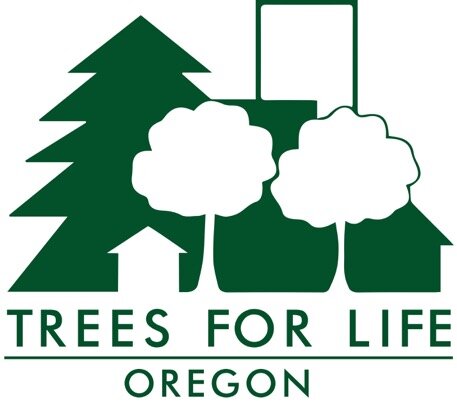Trees for Life Oregon’s Call for Tree Code Changes
September 2021
Portland’s tree code, Title 11, is slated to be revised in 2024-2025, assuming the City Council funds the full three-phase process. City residents who want a code that will preserve large-species trees and space for them need to be thinking now about desired changes. Climate crisis is no longer theoretical, it is here and it is brutal, as we just experienced in summer 2021, when the heat dome cost dozens of Portlanders their lives. Big trees are sorely needed to mitigate the dangers of extreme heat. Trees can save lives, and everyone’s life matters.
Among the revisions Trees for Life Oregon will be championing, these are at the forefront:
--Require 6-foot widths for trees in any new pedestrian corridors in right-of-ways (ROWs). Why force east Portland neighborhoods under intense development to be stuck with planting strips—what we call treeways--that can only hold tiny trees? Is this equitable? Small trees are rightly cherished but don’t provide enough leaf volume in their canopy to cool the air beyond their own shade. Their air-cleaning and storm-water mitigation capacities also are more limited than those of large-form trees. Everyone needs the additional health and environmental benefits provided by large-form trees.
Trees planted in the public ROW are more easily regulated than trees in private yards. Currently, the minimum ROW width is only 4 feet, not large enough to accommodate medium- or large-form trees. Increased density laws implemented in August 2021 permit less private tree-planting space. Given that, our treeways gain even more importance as some of the few spaces left for large-species trees. But only if City code mandates that standard treeway width be expanded from 4 to 6 feet or more.
--Mandate minimum permeable space for trees on development sites and require that this space be preserved in perpetuity. In the zoning code “outdoor area” can be paved: Title 33.110.240.C.2 states that outdoor area “must be surfaced with lawn, pavers, decking, or sport court paving which allows the area to be used for recreational purposes. User amenities, such as tables, benches, trees, planter boxes, garden plots, drinking fountains, spas, or pools may be placed in the outdoor area. It may be covered, such as a covered patio…” [italics by TFLO]. Life-giving trees are rated as equivalent to outdoor tables. And few trees can grow in a covered area.
--Reduce the exemption from tree preservation and planting standards for properties under 5,000 square feet to properties that are under 3,000 square feet. This change would preserve many, many more private-property trees because of the large number of lots that are currently eligible for this 5,000-square-foot exemption. The original tree code drafters had set the threshold at 3,000 square feet but the cut-off was raised due to pressure from developers.
--Don’t automatically permit removal of healthy, non-nuisance trees greater than 6 inches in diameter that are within 10 feet from a structure. Instead, require professionally provided evidence that a) the tree is damaging or during its lifespan is likely to damage a structure, and b) that all of a tree trunk, not merely one portion of the tree, is within 10 feet of a structure.
--Require that invasive-species trees such as tree of heaven and Norway maple that are permitted for removal in development are replaced with trees of a similar size at maturity. Currently, trees on the City’s nuisance list are exempt from all tree preservation requirements in development, according to Urban Forestry’s Nik Desai. In non-development situations on private land, these trees are automatically approved for removal with greatly reduced mitigation—1:1 (tree for tree) instead of up to inch for inch. Removing large nuisance trees without any mitigation leads to a significant loss of environmental services, with no replacement.
--Require that Urban Forestry conduct tree reports on proposed development properties prior to the Bureau of Development Service’s early assistance meetings with builders, and have those early assistance meetings be mandated, not optional.
--Provide enough City budget funds to support enforcement and compliance. Rules are spineless without the capacity to enforce them. Title 11 states that Urban Forestry is responsible for enforcing and ensuring compliance with the tree code, but Urban Forestry does not have the resources to do it. Yearly, thousands of trees that are supposed to get planted on private property are not planted. Also, small-form ROW trees are planted where large-form trees are required according to the conditions listed in Urban Forestry’s Approved Street Tree Lists.
--Tie heritage tree protection to the space these trees occupy. When heritage trees die and are removed, preserve that space to plant a new large-form tree. In fact, throughout the tree code, link trees to the space they need to grow.
Tell City leaders you want a tree code with the muscle and backbone needed to meet our current climate crisis. Tell them you want City bureaus to cooperate around the goal of preserving large-form trees and creating space for planting new ones.
Write to them now and do it again in a few years when the public input process for the tree code revision begins. Defend trees because you love living in a city made safer and healthier because it takes care of its beautiful canopy. Learn where to submit your comments here.
